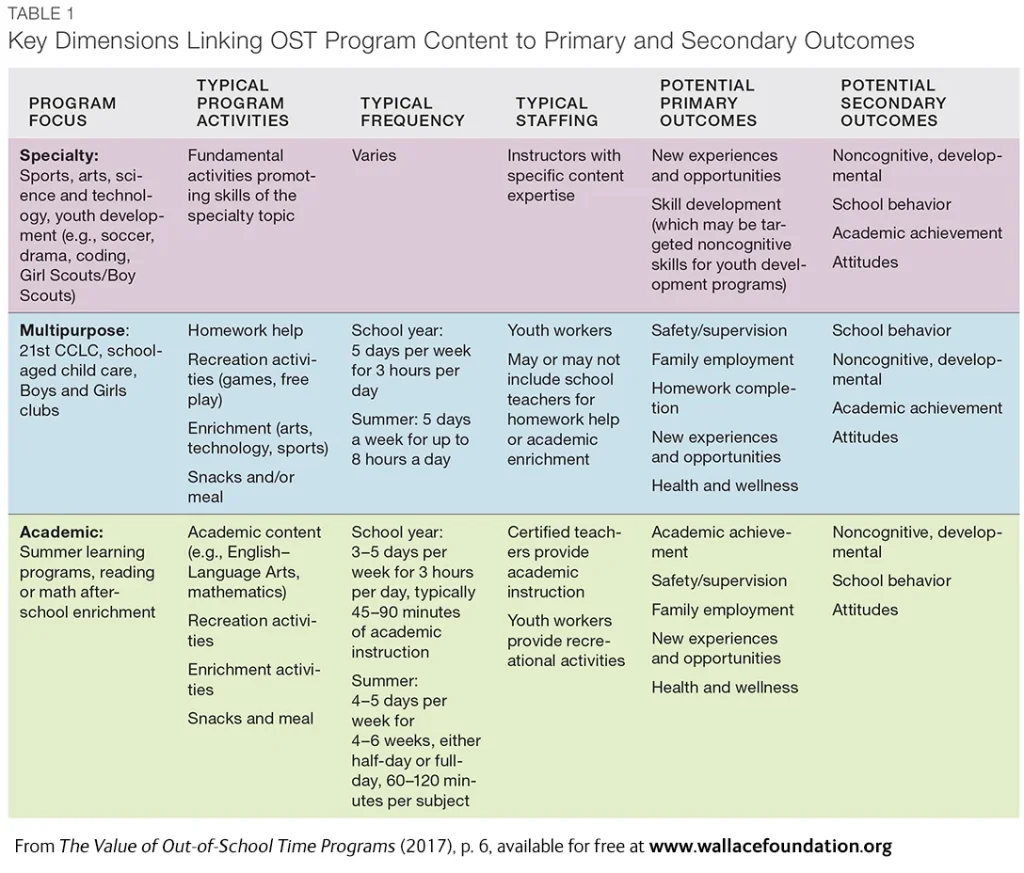Whether you’re a seasoned educator, a passionate parent, or a community member eager to make a difference, this space is for you. We’ll explore the details of creating a school-based after-school program that keeps kids safe and engaged, and fosters growth and development.
This article covers initial planning and funding, staffing, curriculum development, and evaluation. We’ll share practical tips, best practices, and real-world examples to help you navigate the process. Let’s start with this article’s focus on launching a successful school-based after-school program.
Laying the Foundation (K–8)
Starting an after-school program is a big step, but breaking it into manageable steps makes it less overwhelming. Here’s where we’ll begin:
1. Needs Assessment: Understanding Your Community
Before diving into program specifics, understanding your community’s needs is crucial. Consider the following:
- What are the existing after-school options? Are there gaps in service, particularly for specific age groups (K–5 vs. 6–8)?
- What are families’ needs? Do they require childcare, academic support, enrichment activities, or a combination of these? Surveys and community forums can be invaluable here.
- What resources are available? Are there existing facilities, partnerships with local organizations, or potential funding sources?
2. Asset Mapping
Asset mapping is a process of uncovering resources within and beyond a grantee site’s community. These assets can be used to meet the needs identified in the needs assessment. Asset mapping enables staff members to:
- Brainstorm available resources,
- Match them to identified needs from your community needs assessment in Step 1 above, and
- Then, research available resources.
Resources can include community and online resources, local institutions, businesses, teachers, parents, and other programs.
3. Defining Your Vision and Mission
What do you want your after-school program to achieve? A clear vision and mission statement will guide your decisions moving forward. Consider the following:
- What are your core values? (e.g., safety, creativity, academic excellence, social-emotional learning)
- What are your goals for student outcomes? (e.g., improved academic performance, increased social skills, exploration of new interests)
- What makes your program unique? What will set it apart and make it an asset to the community?
4. Building a Strong Team
Your staff are the heart of your program. Consider the following:
- Qualifications and experience: Look for individuals with experience working with children and a passion for education.
- Diverse skill sets: A team with a range of skills (e.g., arts, sports, academics) allows you to offer a more enriching program.
- Background checks and training: Ensure all staff members undergo thorough background checks and receive appropriate training.
- Look at current school day staff: The MOST important thing you can do to build a successful program is to create a strong connection to your campus. Make yourself and your after-school program invaluable by providing vital and aligned services.
5. Target Age Groups
One key consideration is the developmental differences between your younger and older students. While some activities might suit all ages, others require a more tailored approach.
- K–5 (Elementary): Focus on play-based learning, hands-on activities, and building foundational skills. Think creative arts, outdoor games, and literacy support. Supervision and nurturing are paramount.
- 6–8 (Middle School): This age group often seeks more independence and opportunities for exploration. Consider offering clubs, leadership development programs, and academic enrichment activities that cater to their growing interests. Mentorship and social-emotional learning have become increasingly important.
6. Be Intentional With Activity Design
Design a program with activities that meet the needs of targeted students. All intentionally designed activities will connect to program goals.
- Align your activities with your After-School Needs Assessment.
- Connect to grade-level benchmarks, standards, and the school-day curriculum to increase achievement.
- Survey students and parents and build on their interests.
7. Operations
Plan the logistics of your program, including the following:
- Budget: Create a detailed budget covering all expenses, including materials, staff salaries, and transportation.
- Space, Transportation, and Snack: Secure a safe and accessible location, arrange transportation if needed, and plan for nutritious snacks.
- Staffing: Provide them with the necessary training.
- Schedule: Develop a consistent schedule that balances structured activities with free time.
8. Implement Your After-School Program
- Continue to market the program with school staff, students, and parents.
- Post activity schedule.
- Adjust program offerings and schedules as needed.
- Continue to recruit and register parents and students as needed.
- Be in constant contact with campus leadership to ensure you are meeting the needs of the campus.
- Repeat this process as needed for all spring and summer programming.
Quick Reference for Launching a Successful School-Based After-School Program
| Steps & Topic | Key Points |
|---|---|
| Step 1 – Community Needs | Understand community needs through surveys and forums. Identify gaps in services, family needs, and available resources. |
| Step 2 – Resource Mapping | Uncover resources within and beyond the community to meet identified needs. Match resources to needs and research available resources. |
| Step 3 – Vision and Mission | Establish a clear vision and mission. Define core values, goals for student outcomes, and what makes the program unique. |
| Step 4 – Team Building | Hire qualified staff with diverse skills. Ensure background checks and training. Build strong connections with the school campus. |
| Step 5 – Age Group Focus | Tailor activities to developmental differences between K–5 and 6–8 students. Focus on play-based learning for younger kids and independence for older students. |
| Step 6 – Activity Design | Design activities that align with needs assessment, grade-level benchmarks, and school-day curriculum. Survey students and parents to build on their interests. |
| Step 7 – Program Operations | Plan logistics, including budget, space, transportation, and snacks. Provide staff training and develop a consistent schedule. |
| Step 8 – Program Implementation | Market the program, post activity schedules, adjust offerings as needed, recruit and register participants, and maintain communication with campus leadership. Repeat the process for different programming seasons. |
| Success Tips | Ensure safety and supervision, create a welcoming environment, offer diverse activities, provide growth opportunities, and partner with families. |
Additional Tips for Building a Successful After-School Program
- Make sure your program is safe and supervised.
- Create a welcoming and inclusive environment.
- Offer a variety of activities to meet the diverse interests of your students.
- Provide opportunities for students to learn and grow.
- Partner with families to support student success.
The table below provides key dimensions for an after-school program and its outcomes. Visit the Wallace Foundation website to download a copy of this resource.

Conclusion
Launching a successful school-based, after-school program involves careful planning and community engagement. Understanding community needs and mapping available resources to define your program’s vision and mission. Key steps include building a strong team, designing age-appropriate activities, and planning logistics like budget, space, and schedule.
By focusing on safety, inclusivity, and diverse activities, you can create a program that supports student growth and development while fostering strong connections with families and school staff.
ESC Region 13 has resources to guide and support you through this process. Ready to launch your program? Visit our website for expert guidance, current events, learning opportunities, and support every step of the way. Our blog has helpful articles on many subjects and areas.
What are your biggest challenges or questions about starting an after-school program? Share your thoughts in the comments below! For more information, contact John Shanks, ESC Region 13 Expanded Learning Opportunities Coordinator, at john.shanks@esc13.txed.net, or the Expanded Learning Opportunities Team.

John Shanks
John Shanks is the ESC Region 13 Expanded Learning Opportunities Coordinator.





Add comment